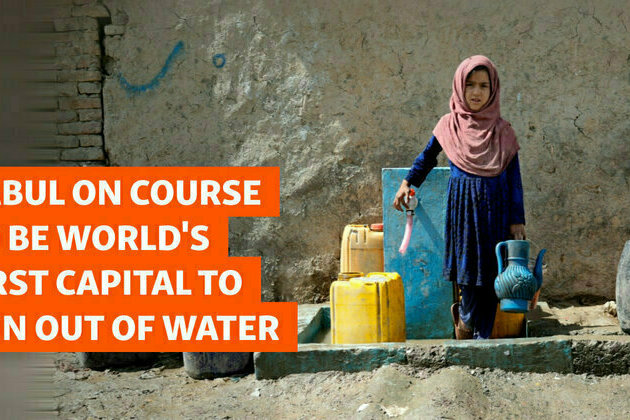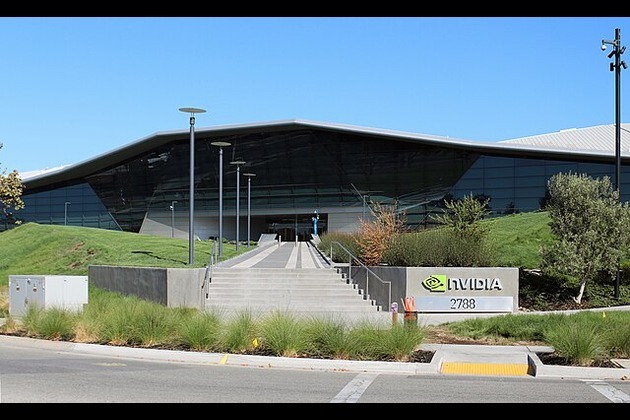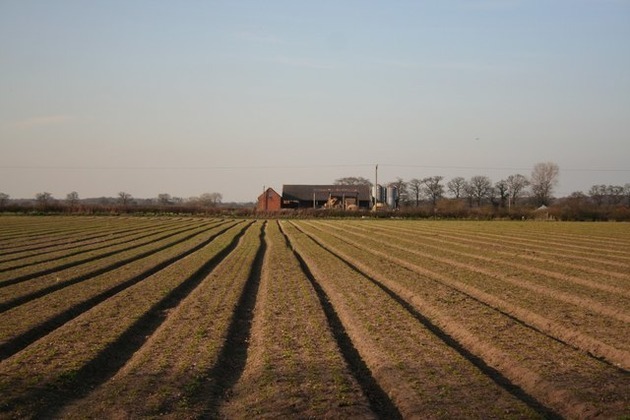Kabul On Course To Be World's First Capital To Run Out Of Water
RFE
06 Jul 2025, 03:36 GMT+10

Kabul could become the worlds first capital to run out of water completely, experts say, blaming the crisis on rapid population growth, climate change, and mismanagement.
The Afghan capitals groundwater levels have plummeted by up to 30 meters in the past decade, while almost half of the citys boreholes -- the main source of drinking water for the residents -- have dried out, according to arecent studyby the Mercy Corps NGO.
Demand for groundwater in the city is disproportionately high: each year, 44 million cubic meters more water is extracted than can naturally be replenished -- nearly double the sustainable rate.
Kabuls population has grown from about 2 million in 2000 to more than 6 million in 2025, putting immense pressure on its water supplies.
The citysaquifersare also being drained by more than 100,000 unregulated borewells and hundreds of factories and greenhouses, according to Mercy Corps and Afghan water management experts who spoke to RFE/RL.
A girl collects water from a public tap as others try to cut the line. (file photo)
Kabul has some 400 hectares of greenhouses that consume about 4 million cubic meters of water annually. said Najibullah Sadid, a water resources and climate changeresearcherbased in Germany. There are also more than 500 beverage businesses operating in Kabul. Just one such company, Alokozay, the largest soft drink company in the city, uses about 1 million cubic meters of groundwater each year.
The United Nations has warned that without swift action, Kabuls groundwater could be depleted by 2030, posing an existential threat to residents and sparking a major wave of migration.
'Having To Choose Between Water And Food'
Many parts of Kabul have already run dry, and residents rely entirely on the limited amount of water they purchase from tankers.
One person who lives in the relatively affluent area of Taimani in northwestern Kabul says he spends a quarter of his salary on water.
My monthly salary is 21,000 Afghani ($300) and I spend at least 5,000 Afghani ($70) on water for our family of 10 people, he told RFE/RL on June 26. We use this water for tea, cooking, washing-up, laundry, and bathing.
There are many families that cant afford to buy water, its like having to choose between water and food, the Taimani resident said.
A woman carries water in a plastic container as she ascends a slope on the way toward her home in Kabul. (file photo)
He also said that those who cant pay for water travel several kilometers to bring it from areas that have public water pumps. Even in sweltering summer weather, many apartment blocks in Kabul only get water once or twice a week.
Watercontaminationis another major challenge that has plagued Afghanistan, where nearly 80 percent of people have no access to safe drinking water, according to the United Nations.
Most of Kabuls groundwater is contaminated with sewage, toxins, and high levels of arsenic, experts say.
Potential Solutions
The Western-backed former Afghan government, which collapsed in 2021, received more than $4 billion from international donors to overhaul its water sector, according to the World Bank, but the sector remains largely underdeveloped both in the capital and the rest of the country.
Officials of the current Taliban-led government in Kabul did not respond to RFE/RLs request for comment. However, many local experts believe the Afghan capital could still resolve its water crisis relatively quickly if decisive steps are taken.
This problem is not new. For over a decade, various proposals on how to tackle the problem have been presented to Afghan authorities, but it has never been a priority for them, Sadid told RFE/RL.
Chart: Access To Clean Drinking Water By Country
Among the proposed solutions is the construction of the Shahtoot dam and reservoir, some 30 kilometers southwest of Kabul. If completed, it would supply drinking water to more than 2 million of the citys residents and help replenish its aquifers.
Another project envisages the construction of a 200-kilometer pipeline to divert more than 100 million cubic meters of water per year from the Panjshir River to the capital.
A man and his children collect water from a public water pump in Kabul. (file photo)
Feasibility studies for both projects were conducted under the previous Afghan government.
In April, the Talibans Ministry of Energy and Water said it wasawaiting budget approvalto begin construction work on the Panjsher River pipeline. The government is reportedly seeking additional investors to fund the $170-million initiative.
Meanwhile, the Shahtoot project is expected to be finished in 2027, if Afghanistan succeeds in raising funds. Its estimated that it will cost around $236 million to complete the dam and reservoir.
Abdul Baset Rahmani, a Kabul-based expert on water resources and climate change, says that the water shortage in the Afghan capital could be resolved within a year-and-half, if there is a political will to do so.
However, he also warns of urgent needs in the short term, calling on international aid agencies to provide emergency assistance to the impoverished people in Kabul who cannot afford to buy drinking water.
Such support would spare these people from enormous financial and mental strain, prevent diseases, and help many children to return to school, he says. There are many children who cant get education because in order to help their families they walk several kilometers every day to places where water is distributed free of charge.
An Afghan boy fills a potable-water tanker from a pump on the outskirts of Kabul. (file photo)
Aid groups, such as the International Committee of the Red Cross (ICRC) and the UN Childrens Agency, UNICEF have undertaken several projects in Afghanistan in recent years to help hundreds of thousands of people access clean drinking water.
Their projects in 2024 included the repair of 1,315 hand pumps and the installation of 1,888 bio-sand filters to remove contaminants from water, in several Afghan provinces,according to the ICRC.
But despite these efforts, unless more urgent government action is taken and major infrastructure projects are completed, Kabuls water crisis is likely to persist and could ultimately force an estimated3 million peopleor roughly half its population -- to flee the city.
 Share
Share
 Tweet
Tweet
 Share
Share
 Flip
Flip
 Email
Email
Watch latest videos
Subscribe and Follow
Get a daily dose of Central Coast News news through our daily email, its complimentary and keeps you fully up to date with world and business news as well.
News RELEASES
Publish news of your business, community or sports group, personnel appointments, major event and more by submitting a news release to Central Coast News.
More InformationBusiness
SectionMeta hires SSI CEO Gross as AI race intensifies among tech giants
PALO ALTO/TEL AVIV: The battle for top AI talent has claimed another high-profile casualty—this time at Safe Superintelligence (SSI),...
Engine defect prompts Nissan to recall over 443,000 vehicles
FRANKLIN, Tennessee: Hundreds of thousands of Nissan and Infiniti vehicles are being recalled across the United States due to a potential...
Microsoft trims jobs to manage soaring AI infrastructure costs
REDMOND, Washington: Microsoft is the latest tech giant to announce significant job cuts, as the financial strain of building next-generation...
Stocks worldwide struggle to make ground Friday with Wall Street closed
LONDON UK - U.S. stock markets were closed on Friday for Independence Day. Global Forex Markets Wrap Up Friday with Greeback Comeback...
Nvidia briefly tops Apple’s record in AI-fueled stock rally
SANTA CLARA, California: Nvidia came within a whisker of making financial history on July 3, briefly surpassing Apple's all-time market...
ICE raids leave crops rotting in California, farmers fear collapse
SACRAMENTO, California: California's multibillion-dollar farms are facing a growing crisis—not from drought or pests, but from a sudden...
California
SectionMeta hires SSI CEO Gross as AI race intensifies among tech giants
PALO ALTO/TEL AVIV: The battle for top AI talent has claimed another high-profile casualty—this time at Safe Superintelligence (SSI),...
Nvidia briefly tops Apple’s record in AI-fueled stock rally
SANTA CLARA, California: Nvidia came within a whisker of making financial history on July 3, briefly surpassing Apple's all-time market...
ICE raids leave crops rotting in California, farmers fear collapse
SACRAMENTO, California: California's multibillion-dollar farms are facing a growing crisis—not from drought or pests, but from a sudden...
Grammarly acquires Superhuman to boost AI workplace tools
SAN FRANCISCO, California: Grammarly is doubling down on AI-powered productivity tools with the acquisition of Superhuman, a sleek...
Robinhood launches stock tokens for EU investors, adds OpenAI
MENLO PARK, California: Robinhood is giving European investors a new way to tap into America's most prominent tech names — without...
Trump hints at DOGE investigation of Musk subsidies
WASHINGTON, DC - U.S. President Donald Trump on Tuesday claimed Elon Musk's success has been built on government subsidies. Without...










